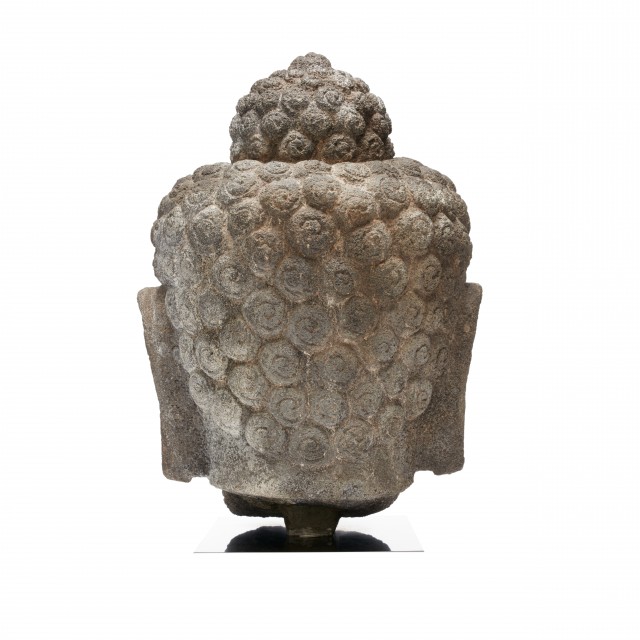
Head of Buddha

Photography by Synthescape, Digital image © Asia Society

Photography by Synthescape, Digital image © Asia Society
Head of Buddha
9th century
Indonesia, Central Java
Andesite
H. 13 x W. 11 x D. 10 in. (33 x 27.9 x 25.4 cm)
Asia Society, New York: Mr. and Mrs. John D. Rockefeller 3rd Collection, 1979.85
Provenance
John D. Rockefeller 3rd, New York, NY; acquired from William H. Wolff, New York, NY, November 26, 1963.
The Asia Society, New York, NY, bequest of John D. Rockefeller 3rd, New York, NY, 1979.
Licensing inquiries
Although the features of this introspective and serene head were executed in accordance with the standard of beauty of Central Java during the 9th century, the head is clearly that of a Buddha because of the presence of a number of the standard symbols indicating a Buddha's superhuman nature (lakshana) that had been developed in India centuries earlier. One of the lakshana present is the urna, a round circle in the center of the forehead, representing a tuft of hair. The original meaning of this symbol is unknown although it is said in later texts to emit light. The 9th-century temple mountain Borobudur is renowned for the beauty and majesty of its more than five hundred seated sculptures of the Directional Buddhas. Since many of the seated Buddhas from the site have lost their heads, it has become common to assign a provenance of Borobudur to works, such as this piece, that are close in style to the sculpture at this famous monument. However, certain features -- for example, a minimally higher forehead and a marginally narrower jaw --distinguish this head from those of the Buddhas at Borobudur and suggest that while this head may have been produced contemporaneously with Borobudur, it was made for a lesser-known site.



